New Exhibition City Of Burrows Explores The Joys And Hardships In Diasporic Bengali Households
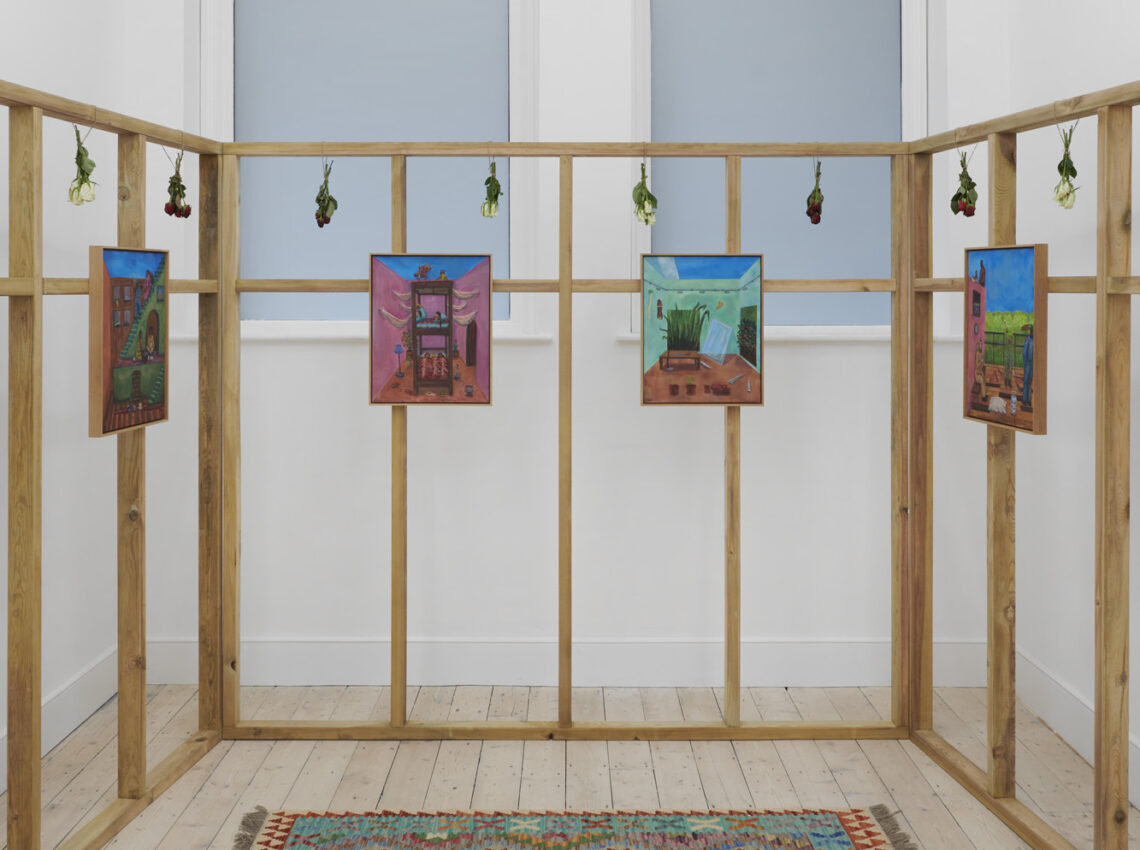
Tucked in an alleyway in Soho sits Phillida Reid, an airy and bright gallery showcasing both emerging and established artists.
In its latest exhibition, East Londoner Mohammed Z. Rahman takes center stage with paintings exploring personal and political (hi)stories of migration, labour, queerness, and class by depicting domestic settings. City of Burrows is the artist’s first solo exhibition, featuring both new and existing work; bright colours and scenarios blending realism with the paranormal make for captivating detail-filled canvases that stand in stark contrast with the gallery’s white and brick walls.
GUAP sat down with the self-taught artist to discuss the show, his values as an artist, and upcoming projects they have coming up.

GUAP: Where does the title the City of Burrows’ come from?
Mohammed: I use the domestic to address wider autobiographical and sociopolitical issues. There’s an impossibly vast amount of life, history, and information to process in a city like London – I was thinking of people living their lives, having their daily dramas, and reaching epiphanies in their homes. I wanted to portray those hidden histories with busyness and tenderness. Also, the aesthetic composition of my work is in a one-point burrow-like perspective, hence the title.
GUAP: Are there any works in the show that stand out?
Mohammed: Probably the Under The Cloth series, which I made specifically for this show.
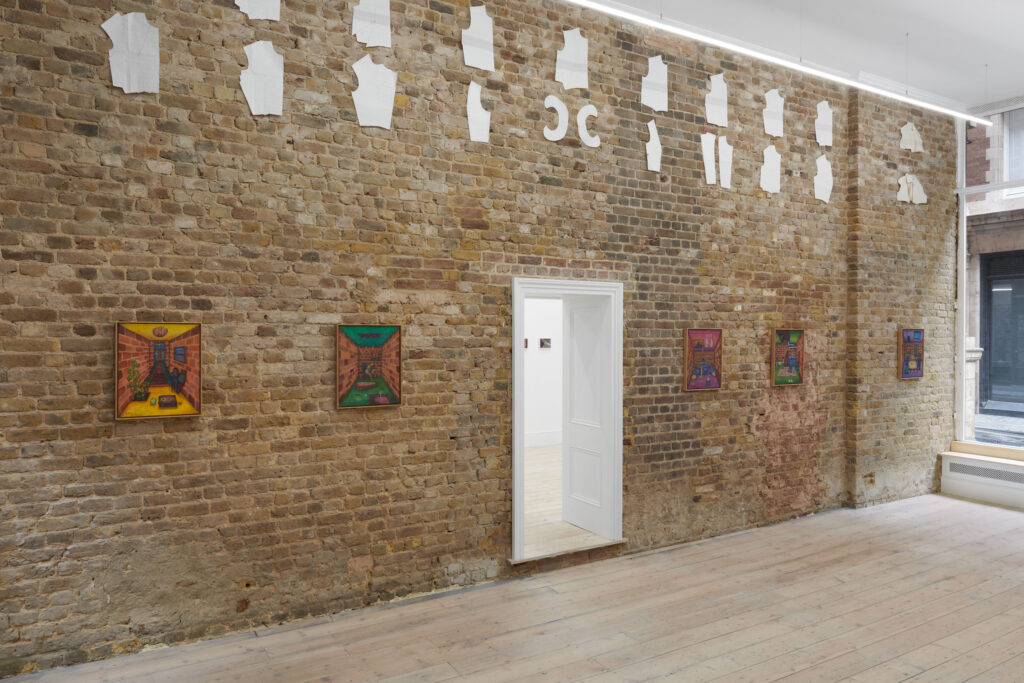
Photography by Ben Westoby
Mohammed: It riffs off the history of Bengali seamstresses in the East End of London from the 70s to the 2000s, including my mum: her pattern cutting is above it. The pieces are based on an oral history project I’ve been doing with her to understand what it was like to work in the rag trade – asking her how she settled in the UK, what she did people do for fun, what relationships were formed, what were the factories like. There’s all this history that ties in joy and jokes with tragedies.
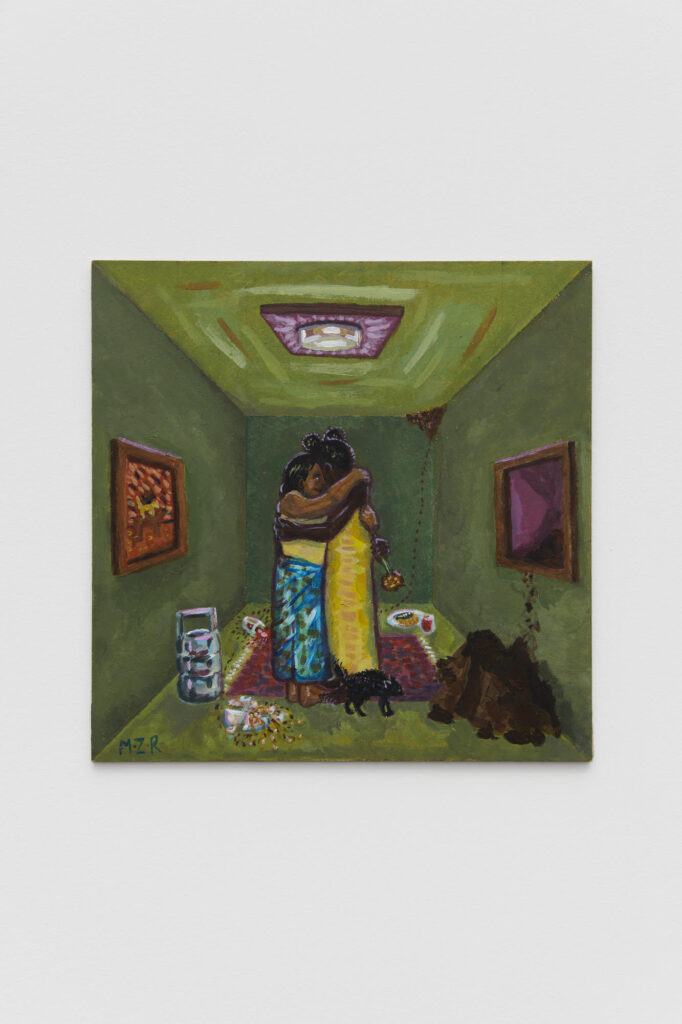
Photography by Ben Westoby
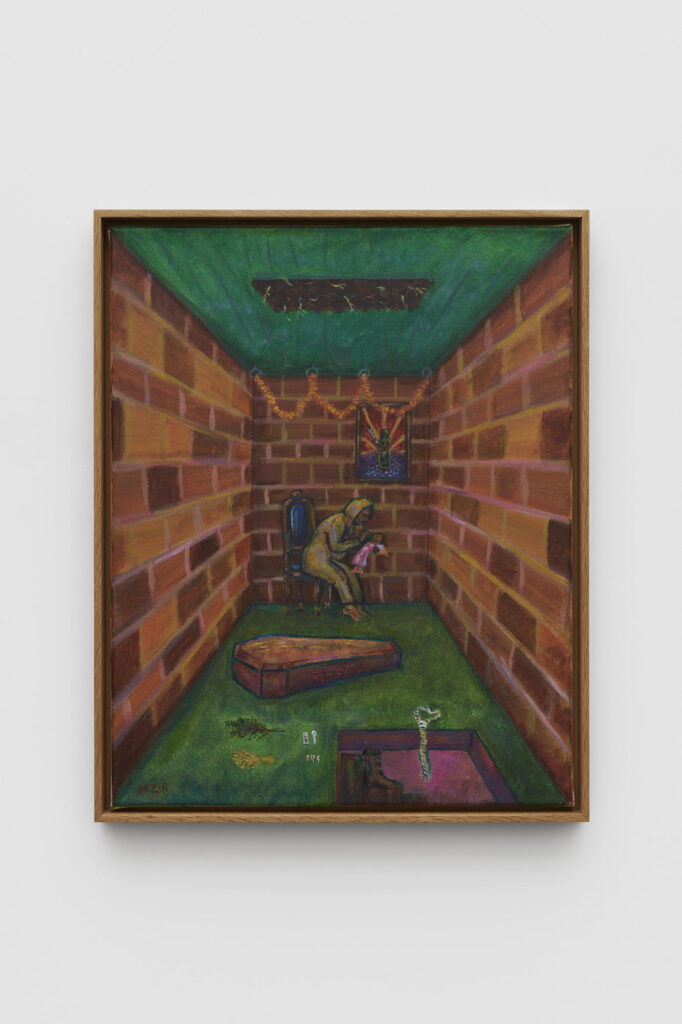
Photography by Ben Westoby

Photography by Ben Westoby
GUAP: What’s been your biggest challenge in making the show?
Mohammed: I’m gonna do that thing in interviews where people say, ‘it’s both a challenge and a strength,’ but I’d say not having an arts background. I’ve found the art world really intimidating. I’m very conscious that, while my family are makers, they’re not from this world. People are groomed into this from a very young age.
Ultimately, I believe that good art and good cultural production are accessible and understandable. It can galvanize people and can get them thinking and feeling.
GUAP: Part of the exhibition’s proceedings will be redistributed to grassroots charities. Why is this important to you?
Mohammed: I’ll donate to organizations working with survivors of domestic violence in East London and Brent. The work I do won’t make sense if it’s going to be something that I will profit off of. I’m depicting things that have affected diasporic communities for generations. I feel a sense of responsibility to give back, even if it is my own history.
GUAP: What have you got coming up?
Mohammed: There are so many other strands to my practice: ecology, zines, cooking, mutual aid, and murals. So all I can say is stay tuned!
Discover more from GUAP’s Art & Culture section here.




![ZINO VINCI’S ‘FILTHY & DISGUSTING’EP BRINGS YOU TO THE CORE OF THE ARTIST [@ZinoVinci]](https://guap.co/wp-content/uploads/2023/10/Zino-4.jpg)

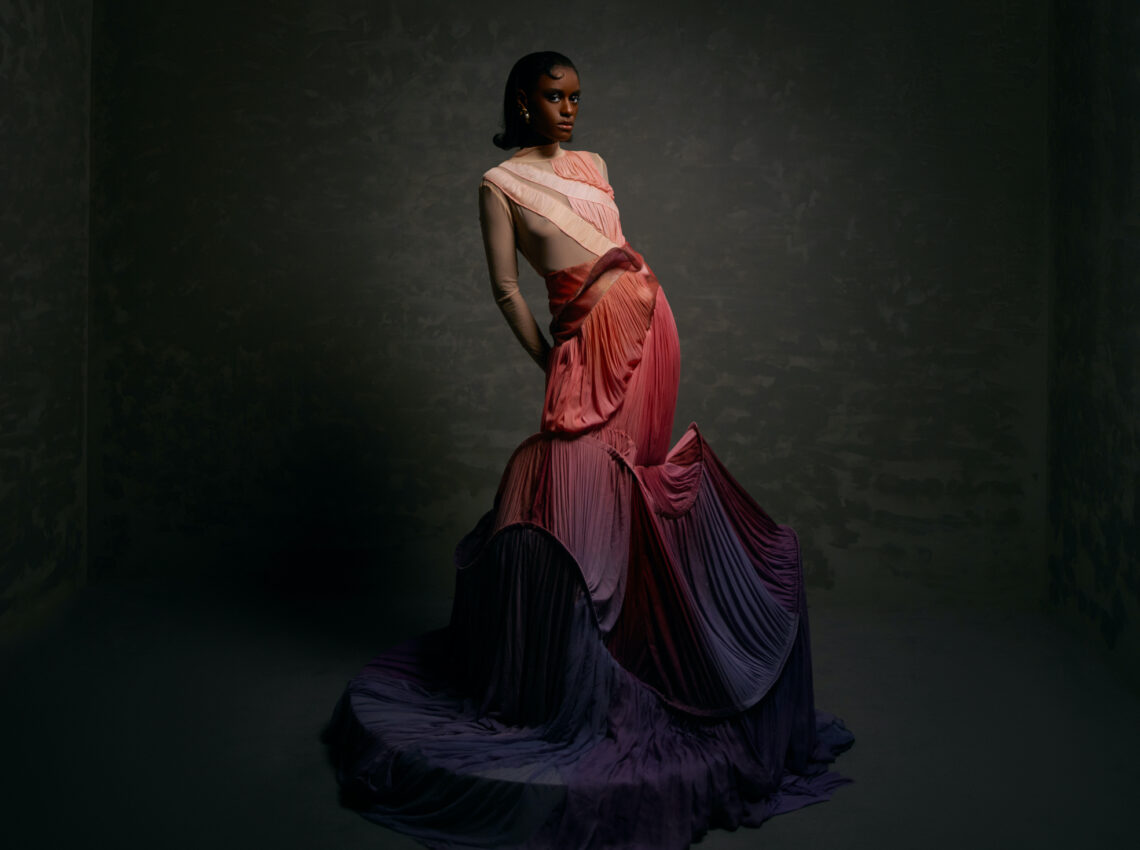
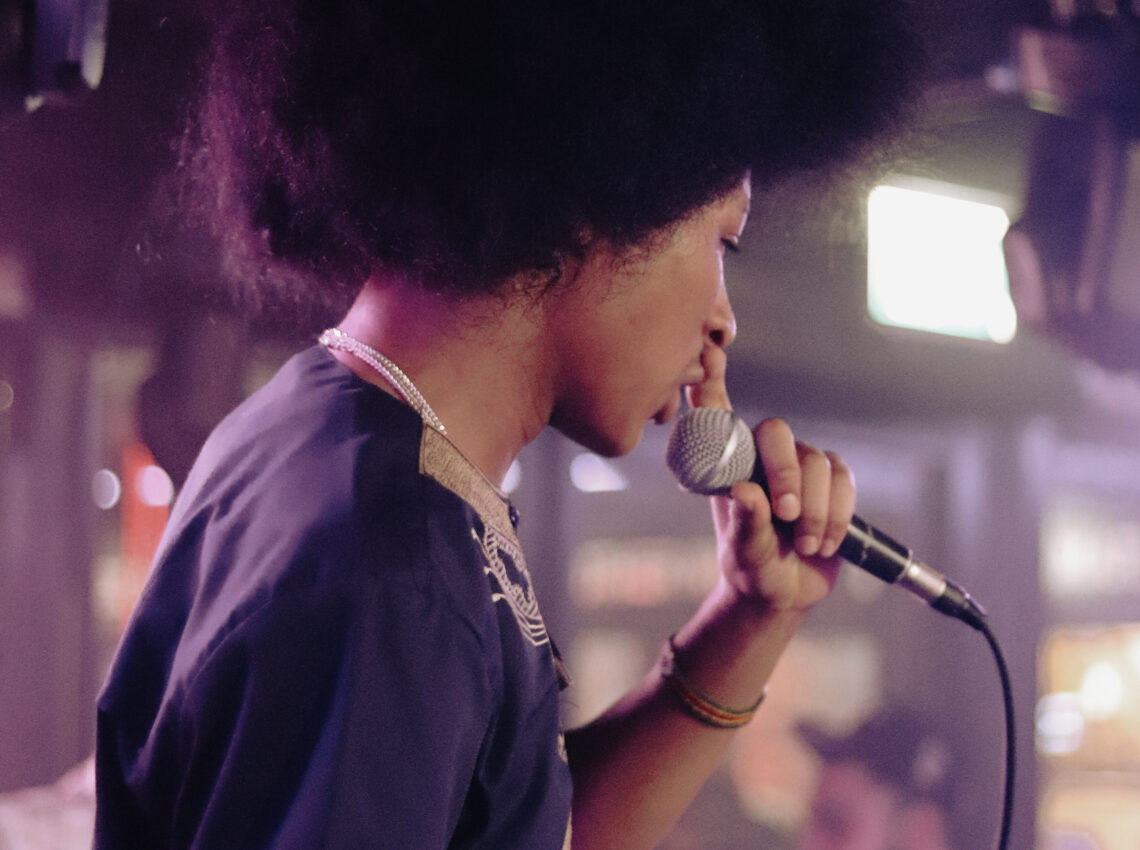


![Remel London’s [@Remel_London] “Mainstream” is a must attend for upcoming presenters!](https://guap.co/wp-content/uploads/2017/02/REMEL-LONDON-FLYER-FINAL-YELLOW-COMPLETE-1.png)